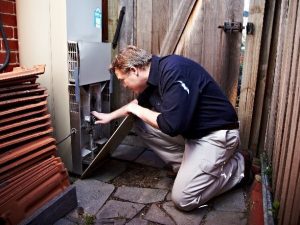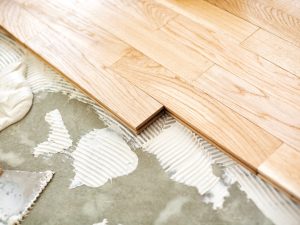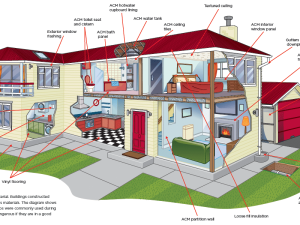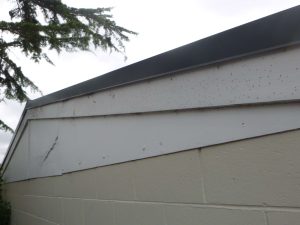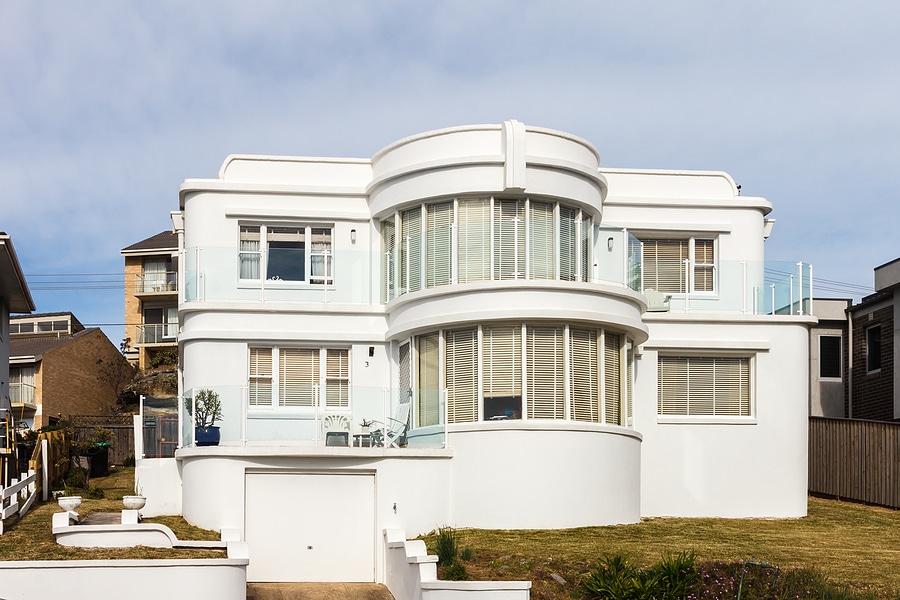
Art deco was the decorative art style of simple bold designs using geometric shapes that predominated in Europe and the USA after world war 1 until the 1930s. This style soon attracted the interest of architects and thus art deco housing was born.
Art Deco Style Homes
Art deco also known as moderne houses first appeared in New Zealand in the early 1930s and remained popular until after World War 2. This style was a major change from the elaborate villa home of the early 20th Century and the simple bungalows of the 1920s.
Regularly built from the 1930s and in smaller numbers through to the early 1950s, New Zealand had two types of art deco homes, speculative and architecturally designed. Speculative art deco homes were similar to traditional NZ housing stock but had plastered walls, flat roofs, rounded corners and minimal decorative additions. Architecturally-designed art deco homes were aimed at the top end of the market and reflected street appeal with the latest international trends.
Solidly built, these attractive homes are characterised by features such as stucco cladding, rounded corners, parapet walls, flat roofs, semi-circular walls, casement windows, recessed porches and exterior geometric ornamentation. Native timbers were used for framing. Almost all towns in New Zealand have some form of art deco construction, the best known being Napier, which was rebuilt following the 1931 earthquake at the height of the art deco style.
All old properties can have problems, but there are some issues specific to art deco construction that it’s worth being aware of before you buy an art deco property.
Rules and Regulations
It is important to contact your local authority before undertaking any art deco house renovation or home renovation project to ensure any and all requirements are met.
Art deco houses are recognised for their unique character and heritage and thus can be subject to special building restrictions put in place by local councils in order to protect their special character.
Insulation
Art deco houses were built without insulation as it was not an option in the day and adding it can bring problems. For example ceiling insulation may be impossible due to the flat or low pitched roofing denying you access.
Unless the interior or exterior wall linings were removed at some stage for major renovation work insulation to the walls is unlikely to have occurred.
If you are considering renting out an art deco home you need to be aware that minimum levels of thermal insulation have been a legal requirement in privately-owned rental homes since 1 July 2019. This does not apply to owner-occupied houses.
Moisture and Weather Tightness
Art deco buildings that have not had regular maintenance can have water tightness problems due to flat roofs which often include internal gutters which can result in the common problems of leaking and moisture.
Cracks in the stucco cladding that allow moisture in, and the lack of underlay on walls and roofs and parapet walls, and a lack of eaves and protection around windows all affect the weather tightness of art deco houses.
The subfloor space can also be a problematic area and needs to be dry and well ventilated.
Hazardous Substances
Lead and asbestos can cause serious health problems and they are both potential health hazards in art deco houses in New Zealand.
Lead was used extensively for guttering, waste pipes and flashing’s as well as being used in paint during the art deco style years. It was common for asbestos sheets to be used in home renovations for flooring and decorative ceilings and sometimes used as a stucco substrate.
Lead and asbestos are relatively harmless while resting in peace however home renovation in art deco houses when asbestos fibres and layers of leaded paint are released into the air can turn into long term health problems.
Fire Risk
Fire safety was not front of mind in the days of constructing art deco buildings so as well as considering the common issues associated with fire protection i.e smoke alarms etc it is important to be mindful of old wiring.
Conduit was not used for wiring in the 1930s and ’40s. The wiring deteriorates over time as the rubber insulation perishes and becomes brittle, posing a significant fire risk. This wiring needs to be replaced as it poses a fire risk and may invalidate your home insurance.
Art deco houses are iconic New Zealand homes with unique character and heritage but you need to be aware of the issues that may come with them. Jim’s Building Inspections are happy to assess these issues for you and work through how you can overcome them.

